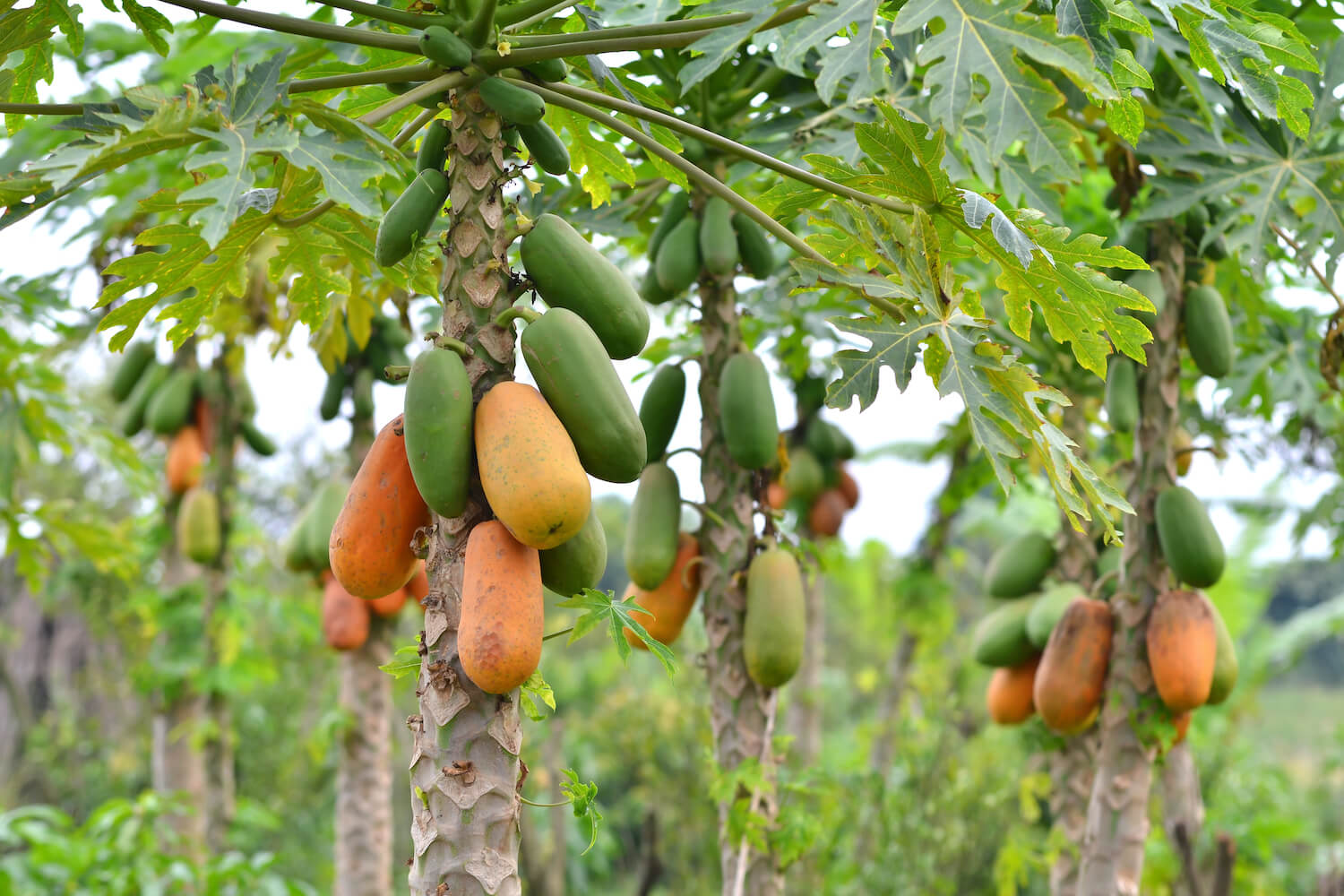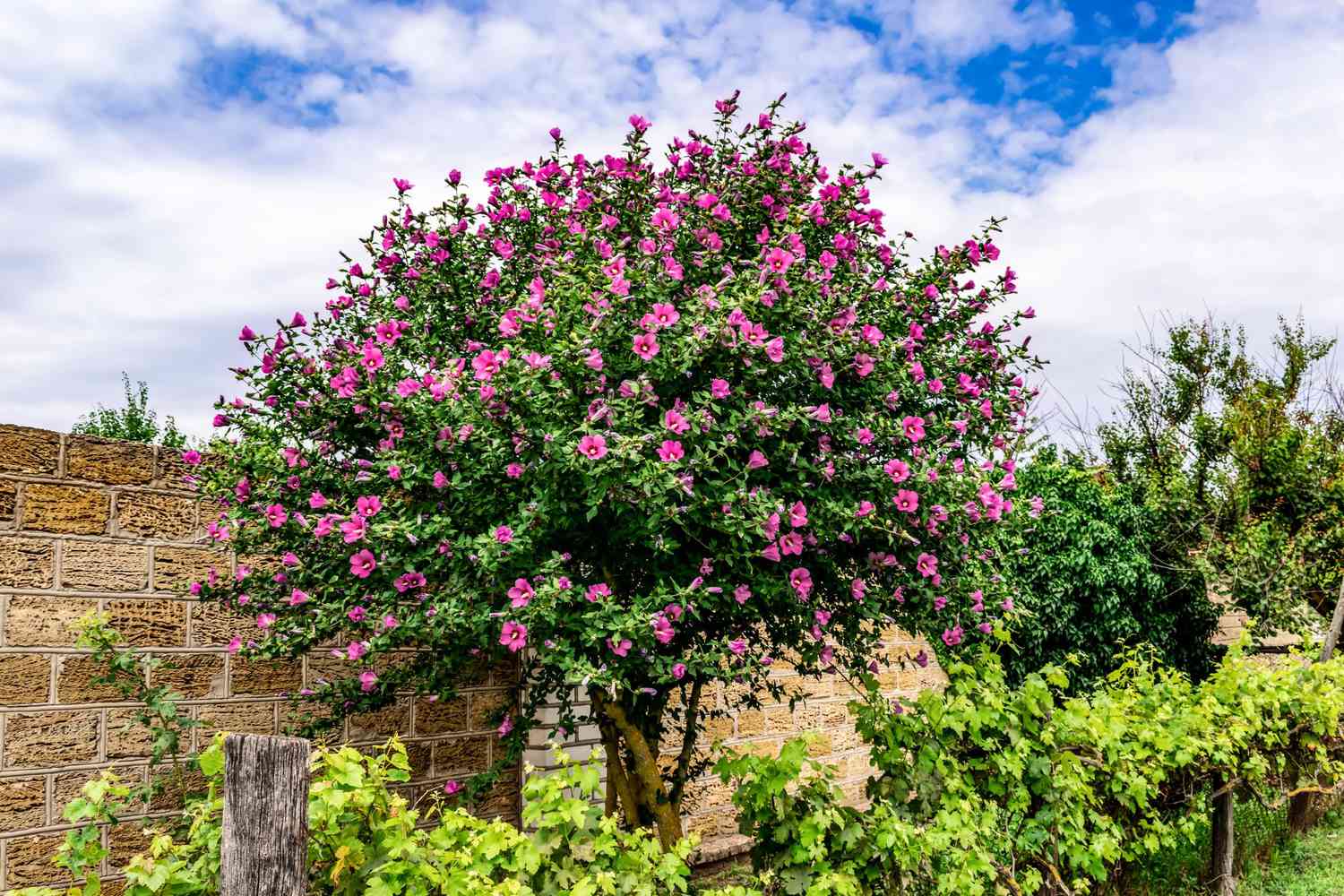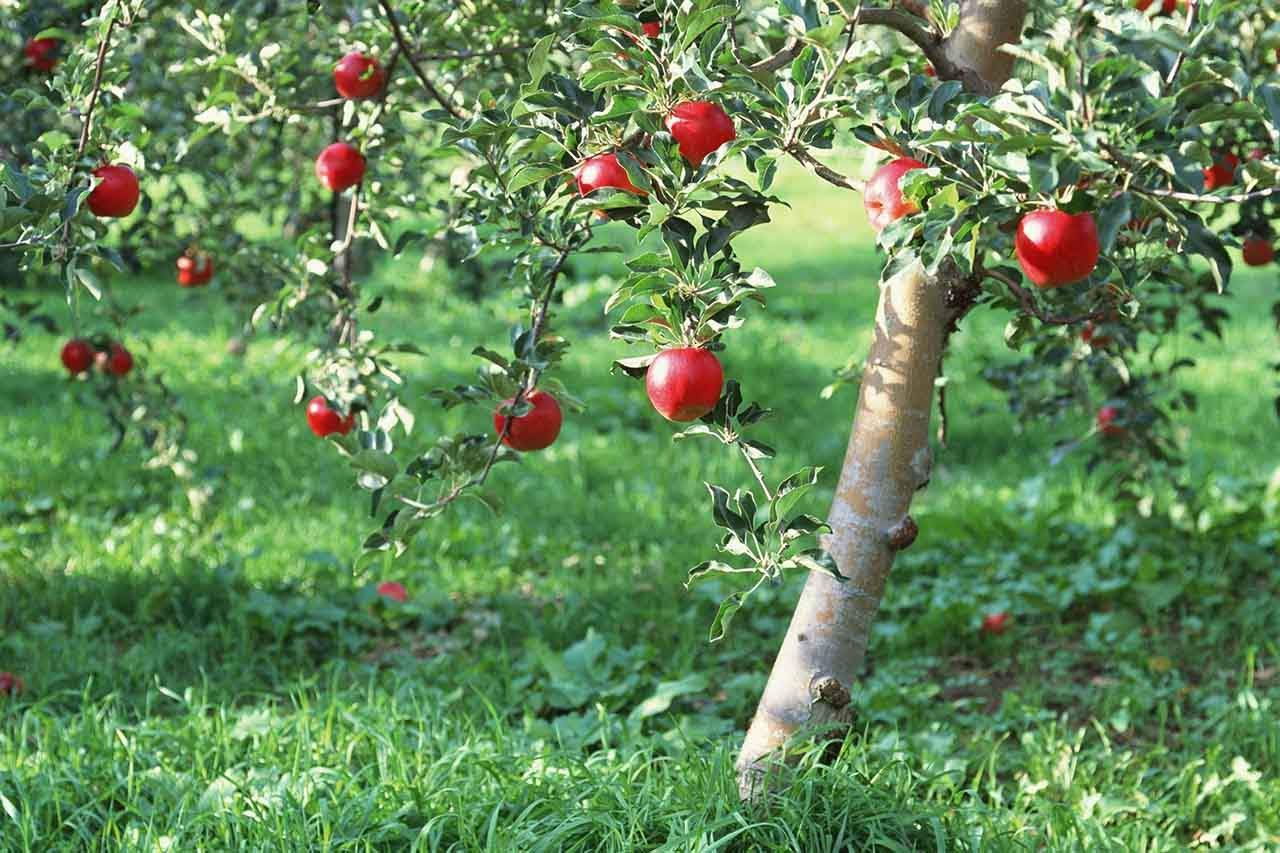Home>Types of Gardening>Edible Gardening>How Big Do Apple Trees Get


Edible Gardening
How Big Do Apple Trees Get
Modified: January 22, 2024
Find out the maximum size of apple trees in edible gardening. Tips for growing apple trees and managing their size for optimal fruit production.
(Many of the links in this article redirect to a specific reviewed product. Your purchase of these products through affiliate links helps to generate commission for Chicagolandgardening.com, at no extra cost. Learn more)
Table of Contents
Introduction
Welcome to the world of edible gardening! There’s nothing more satisfying than growing your own food, and one of the most popular choices for home gardeners is apple trees. Not only do they provide a bountiful harvest of delicious fruit, but they also add beauty and elegance to any backyard or garden space.
Apple trees come in a variety of sizes, from dwarf varieties suitable for small spaces to large ones that can reach towering heights. If you are considering planting apple trees in your garden, it’s essential to understand the factors that influence their size and how to optimize their growth to ensure a successful harvest.
Several factors can determine the size of apple trees, including rootstock selection, variety, growing conditions, and pruning techniques. By considering these factors, you can manage the size of your apple trees to fit your available space and make the most of your gardening efforts.
In this article, we will explore the factors influencing the size of apple trees, optimal growing conditions, common varieties and their average sizes, techniques for controlling tree size, and tips for pruning and training apple trees. Whether you are a beginner or an experienced gardener, this guide will equip you with the knowledge and skills to cultivate healthy and productive apple trees in your own backyard.
So, let’s dive in and discover the secrets of growing thriving apple trees!
Factors influencing the size of apple trees
Several factors play a crucial role in determining the size of apple trees. Understanding these factors will help you choose the right variety and implement the proper techniques to control tree size in your edible garden.
1. Rootstock Selection: Rootstock is the base onto which the apple scion (the desired fruiting variety) is grafted. Different rootstocks have varying growth characteristics, including size, vigor, and compatibility with soil types. For example, dwarfing rootstocks result in smaller apple trees, while semi-dwarf and standard rootstocks produce larger trees.
2. Variety: The choice of apple variety also affects tree size. Some apple varieties naturally grow bigger than others. For instance, “Golden Delicious” and “Granny Smith” are known for their vigorous growth and can reach considerable heights. On the other hand, “M9” rootstock is commonly used for dwarfing popular apple varieties like “Fuji” and “Gala.”
3. Growing Conditions: The environment and growing conditions can impact the size of apple trees. Factors such as sunlight, soil nutrients, water availability, and overall care contribute to the tree’s growth and size. Adequate sunlight and well-draining soil rich in organic matter can promote healthier and more robust growth.
4. Pruning and Training: Proper pruning and training techniques play a crucial role in managing the size of apple trees. Regular pruning, especially in the winter months when the tree is dormant, helps maintain the desired shape, control excessive growth, and promote optimal fruit production. Strategic training methods, like espalier or trellising, can also help control the spread and height of the tree.
It’s important to consider these factors when selecting apple varieties and planning your garden layout. By choosing the right rootstock, variety, optimizing growing conditions, and employing effective pruning and training techniques, you can successfully manage the size of your apple trees to suit your space and maximize productivity.
Optimal growing conditions for apple trees
Creating the right growing conditions for your apple trees is essential for their health, vigor, and productivity. By meeting their specific requirements, you can ensure that your apple trees thrive and produce abundant fruit for years to come.
1. Sunlight: Apple trees are sun-loving plants and thrive in areas that receive at least 6-8 hours of direct sunlight each day. Choose a location in your garden where the trees will be exposed to ample sunlight throughout the day, preferably facing south or southwest for maximum exposure.
2. Soil: Apple trees prefer well-draining soil with a slightly acidic to neutral pH ranging from 6.0 to 7.0. Before planting, amend the soil with organic matter, such as compost or well-rotted manure, to improve its fertility and drainage capabilities. Conduct a soil test to assess its nutrient levels and make any necessary adjustments for optimal growth.
3. Watering: While apple trees are relatively drought-tolerant once established, they require consistent watering, especially during periods of prolonged dry spells. Provide deep, thorough watering to reach the root zone, and avoid overwatering, as excessive moisture can lead to root rot and other diseases.
4. Fertilization: Apple trees benefit from regular fertilization to ensure healthy growth and fruit production. Use a balanced, slow-release fertilizer specifically formulated for fruit trees, following the manufacturer’s instructions. Apply in early spring before new growth emerges and again in early summer to support growth and fruit development.
5. Mulching: Apply a layer of organic mulch, such as wood chips or straw, around the base of the apple tree to help conserve moisture, suppress weeds, and regulate soil temperature. Leave a gap around the trunk to prevent moisture buildup, which can lead to fungal diseases.
6. Pest and Disease Management: Regular monitoring and preventive measures are essential to protect your apple trees from common pests and diseases. Implement integrated pest management practices, including regular inspection for signs of insect infestation, disease symptoms, and promptly addressing any issues through organic pest control methods.
By providing the optimal growing conditions of sunlight, well-draining soil, appropriate watering and fertilization, and proactive pest and disease management, you set your apple trees up for success. With the right care and attention, they will reward you with beautiful blooms in spring and a delightful harvest in the fall.
Common varieties of apple trees and their average sizes
When it comes to apple trees, there is a wide variety to choose from, each offering its unique flavor, texture, and characteristics. Understanding the growth habits and average sizes of different apple tree varieties will help you select the right trees for your garden space and desired harvest.
1. Dwarf Varieties: Dwarf apple trees are perfect for small gardens or container planting. They typically reach a height of 6 to 10 feet (1.8 to 3 meters) at maturity. Popular dwarf varieties include “Cox’s Orange Pippin,” “Gala,” and “Golden Delicious.”
2. Semi-Dwarf Varieties: Semi-dwarf apple trees are slightly larger than dwarf varieties, making them suitable for medium-sized gardens. They typically grow to a height of 10 to 16 feet (3 to 4.9 meters) at maturity. Examples of semi-dwarf apple varieties include “Fuji,” “Braeburn,” and “Jonathan.”
3. Standard Varieties: Standard apple trees are the largest in size, often reaching heights of 16 to 25 feet (4.9 to 7.6 meters) at maturity. They are ideal for spacious gardens or orchard settings. Popular standard apple varieties include “Granny Smith,” “Red Delicious,” and “Honeycrisp.”
It’s important to note that these size ranges are approximate and can vary based on environmental factors, rootstock, and pruning techniques. Additionally, some apple trees may have a more spreading or upright growth habit, affecting their overall size and shape.
When selecting apple tree varieties, consider not only their size but also factors such as pollination requirements, disease resistance, and flavor profiles. Consult with local nurseries, extension offices, or experienced gardeners to identify varieties well-suited for your region and desired harvest.
By understanding the average sizes of common apple tree varieties, you can plan your garden layout efficiently, ensuring each tree has enough space to grow and thrive. Whether you prefer a compact dwarf tree or a majestic standard variety, there’s an apple tree out there to suit your taste and garden size.
Techniques for controlling the size of apple trees
Controlling the size of apple trees is essential for managing their growth, optimizing fruit production, and ensuring they fit within your garden space. Several techniques can help control the size of apple trees, allowing you to maintain their shape, promote optimal fruiting, and facilitate easier maintenance.
1. Pruning: Regular pruning is one of the most effective techniques for controlling the size of apple trees. Prune during the dormant season, typically in late winter or early spring, to remove dead, damaged, or diseased branches. Additionally, selectively prune branches to increase light penetration and air circulation, which helps manage growth and prevent overgrowth.
2. Training: Training apple trees to specific growth forms can help control their size and shape. Training techniques such as espalier, where the branches are trained horizontally along a support structure, or trellising, can limit vertical growth and spread. These methods allow for better space utilization and easier maintenance.
3. Rootstock selection: When choosing apple tree rootstocks, select ones that are dwarfing or semi-dwarfing in nature. Rootstocks such as M9, M26, and M27 are known for producing smaller trees, making them ideal for limited spaces or container gardening. Be mindful of the specific characteristics and growth habits associated with different rootstocks when making your selection.
4. Pruning for fruit thinning: Thinning the fruit on apple trees can help manage the size of the overall tree and promote larger, healthier fruits. Removing excess fruit allows the tree to allocate more energy to the remaining ones, leading to better quality and size. Thin the fruit when they are small to ensure adequate spacing between them.
5. Vigilant maintenance: Regularly monitor and maintain your apple trees throughout the growing season. Watch for signs of excessive growth or crowding, and promptly address any issues. This can involve further pruning, removing water sprouts or suckers, or providing adequate support to prevent branches from breaking under the weight of the fruit.
Remember, it’s important to strike a balance when controlling the size of apple trees. While it’s essential to manage growth, overly aggressive pruning or restrictive techniques can negatively impact fruit production or increase the risk of disease. Properly managing growth ensures that the tree remains healthy, productive, and aesthetically pleasing in your garden space.
Tips for pruning and training apple trees
Pruning and training are crucial techniques for maintaining the health, shape, and productivity of apple trees. With proper pruning and training, you can control the size, encourage proper airflow, and maximize fruit production. Here are some essential tips to consider when pruning and training your apple trees:
1. Timing: Prune apple trees during their dormant season, usually in late winter or early spring before new growth begins. This allows the tree to allocate energy to the remaining branches and promotes rapid healing of pruning wounds.
2. Tools: Use sharp, clean pruning tools such as pruning shears, loppers, and a pruning saw. Clean your tools with a disinfectant solution between each cut, especially when pruning diseased branches, to prevent the spread of disease.
3. Remove dead, damaged, and diseased wood: Start by removing any dead, damaged, or diseased branches. These can serve as entry points for pests and diseases and hinder the overall health of the tree.
4. Thin out crowded branches: Aim for an open center or vase-shaped structure by selectively removing some branches. This promotes proper airflow, sunlight penetration, and reduces the risk of disease by allowing better moisture evaporation.
5. Avoid excessive pruning: While pruning is necessary, avoid over-pruning, as it can reduce fruit production and stress the tree. Aim to strike a balance between removing excess growth and maintaining enough foliage to support the tree’s energy needs.
6. Train young trees: Young apple trees are more pliable and respond well to training techniques. Use stakes, ties, or trellises to guide the growth of young branches in the desired direction. This helps shape the tree and promotes a strong framework of branches.
7. Monitor water sprouts and suckers: Water sprouts are vertically growing shoots that emerge from the trunk or main scaffold branches. Remove these sprouts as they divert energy from other essential parts of the tree. Likewise, suckers are vigorous shoots emerging from the rootstock and should be promptly removed.
8. Prune for fruit thinning: If the apple tree sets an abundant crop, thinning the fruit can improve fruit quality and reduce the risk of limb breakage. Remove excess fruit when they are small, leaving a few inches of space between each remaining fruit.
9. Review pruning principles regularly: Stay informed about proper pruning techniques by consulting instructional materials or seeking advice from experienced gardeners. Regularly reviewing and refreshing your knowledge of pruning principles will ensure you make informed decisions when caring for your apple trees.
Remember, pruning and training are ongoing practices that require regular care and attention. By following these tips and adapting them to the specific needs of your apple trees, you can maintain healthy, well-shaped trees that produce abundant and high-quality fruit.
Conclusion
Growing apple trees in your edible garden can be a rewarding and fruitful experience. Understanding the factors influencing their size, providing optimal growing conditions, selecting the right varieties, and employing effective pruning and training techniques are essential for managing their growth and maximizing their potential.
By carefully selecting the rootstock and variety, you can ensure the apple trees fit within your available space and offer the desired fruit characteristics. Creating the optimal growing conditions with ample sunlight, well-draining soil, and proper watering and fertilization will contribute to their overall health and productivity.
Controlling the size of apple trees through pruning and training techniques allows you to maintain their shape, promote better airflow, and optimize fruit production. Regularly thinning fruit, removing dead or diseased branches, and monitoring for excessive growth will help maintain a healthy and manageable tree.
Remember, it’s essential to strike a balance when implementing these techniques and to adapt them based on your specific situation and preferences. Regular care and maintenance, including vigilant monitoring for pests and diseases, will ensure the long-term success of your apple trees.
So, whether you have a small urban garden or a spacious backyard, take the plunge and plant some apple trees. Enjoy the beauty of their blossoms, experience the joy of watching the fruits develop, and savor the delicious taste of homegrown apples. With the knowledge gained from this guide, you’re well-equipped to embark on a fruitful journey of cultivating thriving apple trees in your own edible garden.










